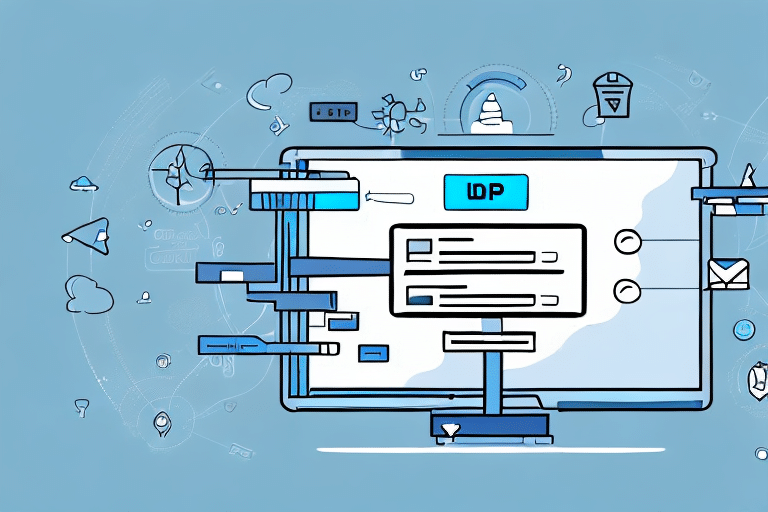How to Change the Database Server Name in FedEx Ship Manager OBDC
In today's technologically advanced world, optimizing delivery time and shipping efficiency is crucial for any business. FedEx Ship Manager OBDC is a powerful software that helps companies handle their shipping operations effectively. However, if the database server name is incorrect, it can lead to issues that negatively impact the software's efficiency. In this article, we will guide you through changing the database server name in FedEx Ship Manager OBDC and discuss the importance of ensuring its accuracy.
Understanding the Importance of the Database Server Name in FedEx Ship Manager OBDC
Role of the Database Server Name
The database server name is crucial for the proper functioning of FedEx Ship Manager OBDC. It identifies the location of the database on a network where all shipping data and information are stored. An incorrect server name prevents the software from accessing necessary data, leading to potential shipment information loss or delays. According to a study by Gartner, data accessibility issues can reduce operational efficiency by up to 30%.
Security Considerations
A properly configured database server name also plays a role in security. If the server name is easily guessable or becomes publicly known, it increases the risk of unauthorized access and potential data breaches. Ensuring that the server name is unique and confidential helps protect sensitive shipping information from malicious actors. The ISO 27001 standard emphasizes the importance of securing database access to maintain data integrity and confidentiality.
Data Backup Best Practices
In addition to naming conventions, regular backups of the shipping database are essential. Backing up data ensures that in the event of system failures or data corruption, businesses can quickly recover and continue operations without significant disruptions. According to NIST, implementing effective backup strategies can reduce data loss incidents by up to 80%.
Common Issues Caused by Incorrect Database Server Names
Connection Failures
An incorrect database server name can prevent FedEx Ship Manager OBDC from connecting to the database. This results in the inability to access or update shipping information, leading to operational delays and customer dissatisfaction.
Performance Degradation
Incorrect server names can also cause the software to experience slow performance. Tasks that should be instantaneous may take significantly longer, reducing the overall efficiency of shipping operations. A report from Forrester indicates that performance issues can decrease shipping throughput by up to 25%.
Security Vulnerabilities
Using an incorrect or poorly configured server name may expose the database to unauthorized access attempts. This increases the risk of data breaches, which can lead to legal consequences and loss of customer trust.
Reporting Inaccuracies
FedEx Ship Manager OBDC relies on accurate data for generating reports that inform business decisions. An incorrect database server name can disrupt data retrieval, leading to incomplete or inaccurate reports. This can result in misguided strategies and financial losses.
Preparing Your System for Changing the Database Server Name
Backup Procedures
Before making any changes to the database server name, it is imperative to back up your database. This precaution safeguards against potential data loss or corruption during the transition. Tools like Microsoft SQL Server offer robust backup solutions that should be utilized.
Permission and Access Checks
Ensure that you have the necessary permissions to modify the database server configuration. Typically, this requires administrative access. Additionally, verify that all users who need access to the database are informed about the upcoming changes.
Scheduling the Change
Plan the server name change during off-peak hours to minimize disruption to business operations. According to ITWorld, scheduling maintenance during periods of low activity can reduce the impact on productivity and customer service.
Step-by-Step Guide to Changing the Database Server Name in FedEx Ship Manager OBDC
- Close the FedEx Ship Manager OBDC application if it's running.
- Navigate to the Windows directory and open the 'win.ini' file using a text editor like Notepad.
- Locate the '[FEDEX ODBC]' section within the file.
- Find the 'DSN=' parameter and update it with the new database server name.
- Save the changes to the 'win.ini' file and exit the text editor.
- Restart the FedEx Ship Manager OBDC application and verify that it successfully connects to the database using the new server name.
Ensure that all dependent applications are updated with the new server name to maintain seamless integration across your system.
Troubleshooting Common Issues
Connection Problems After Changing the Server Name
If the FedEx Ship Manager OBDC fails to connect after changing the server name, verify that the new name is correct and that the database server is operational. Check network connectivity and ensure that the server is reachable from the application server. Refer to the ODBC documentation for troubleshooting connection issues.
Impact on Dependent Applications
Changing the database server name may affect other applications that rely on the same database. Update the connection settings in all related applications to reflect the new server name. Failure to do so can result in application errors and data access issues.
Performance Issues
Post-change performance issues may arise due to misconfigurations or network latency. Monitor the system's performance and ensure that the new server is optimized for handling the database load. Tools like Redgate SQL Toolbelt can help in diagnosing and resolving performance bottlenecks.
Best Practices for Choosing the Right Database Server Name
Unique and Descriptive Naming
Choose a database server name that is both unique and descriptive, allowing easy identification of its purpose and location within the network. For example, using a naming convention like 'FedExDB-Primary-01' can clarify the server's role.
Adherence to Naming Conventions
Follow your organization's established naming conventions to maintain consistency and avoid confusion. Consistent naming facilitates easier management and reduces the likelihood of errors during configuration changes.
Scalability Considerations
Select a server name that accommodates future growth. Consider potential expansions and additional databases when designing your naming strategy to ensure scalability and adaptability.
Benefits of a Properly Configured Database Server Name
Improved Efficiency and Performance
A correctly configured server name ensures that FedEx Ship Manager OBDC can access the database swiftly and reliably, enhancing overall shipping efficiency and minimizing errors. This leads to faster processing times and increased customer satisfaction.
Enhanced Data Security
Proper naming reduces the risk of unauthorized access by obscuring the server's identity. Combined with secure access protocols, this protects sensitive shipping data from potential breaches.
Ease of Management and Analysis
A well-organized database infrastructure simplifies the management and analysis of shipping data. It facilitates easier tracking of shipping trends, identification of areas for improvement, and informed decision-making based on accurate data insights.
Advanced Techniques to Optimize Database Performance
Database Optimization Strategies
Implement database optimization techniques such as defragmentation, indexing, and query optimization to enhance performance. Tools like Oracle Database provide comprehensive optimization features that can be leveraged to maintain high performance levels.
Performance Monitoring and Analysis
Regularly monitor database performance using analytics tools to identify and address bottlenecks. Platforms like Splunk Enterprise offer robust monitoring capabilities that aid in maintaining optimal database health.
Regular Backups and Recovery Planning
Establish a routine backup schedule and develop a comprehensive recovery plan to safeguard against data loss. Utilizing automated backup solutions and off-site storage can ensure data integrity and availability in case of unforeseen system failures.
In conclusion, ensuring that the database server name is correct is essential for running FedEx Ship Manager OBDC effectively and efficiently. By understanding the importance of the database server name, preparing your system appropriately, following a detailed step-by-step guide, and implementing best practices, you can prevent issues and optimize software performance. Additionally, advanced optimization techniques can further enhance your shipping operations, ultimately contributing to your business's success.






















